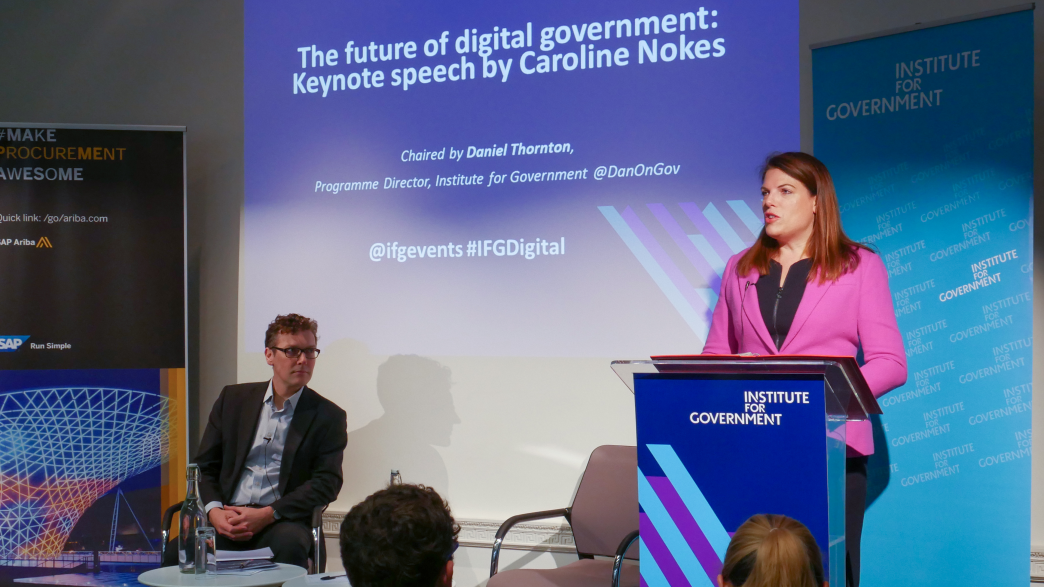Caroline Nokes says digital government is making progress. But the focus needs to be on getting standards applied more widely across government and the public sector, argues Lewis Lloyd.

At the Institute for Government last week, the Minister for Government Resilience and Efficiency, Caroline Nokes, gave her first statement on the state of digital government since the snap election.
Nokes’ speech aimed to reassure the audience that the government’s strategy is on track. She highlighted services that the Government Digital Service (GDS) is building to be used across the public sector.
But for the benefits of digital government to be realised, GDS should focus on spreading standards across government, so that services and organisations can be recombined “like Lego”. Nokes seemed to agree that “Lego government” is the right direction, but so far GDS has not put the spread of standards at the top of its agenda.
Turning “big and slow” government aroundNokes made some important points about a modern government being a digital one. Much of this is in line our research on digital government.
She acknowledged that Government is ‘big and…slow’, while a modern government must keep up with people’s expectations of the convenience afforded by technology in their daily lives. The Government has “a duty to meet the needs and expectations of the people that it serves”, and that will vary across the population.
But she was quick to add that the “oil tanker” that is government is already being turned around.
The UK topped the UN’s e-government survey in 2016, and there has been more progress since. GOV.UK, she argued, “proved the art of the possible” by recently celebrating its four billionth visit and serving as an inspiration to governments worldwide. GOV.UK Registers are ‘the gold standard’ for data in a number of domains and £2.6bn has been spent through the Digital Marketplace. The new Digital Economy Act has made data sharing easier and the Data Science Ethical Framework is being revised.
But more than simply turning the oil tanker around, Nokes said there are three areas where the Government is looking to press ahead.
- The accessibility of GOV.UK - ensuring that content can be accessed by anyone using any technology, including voice-controlled virtual assistants such as Siri and Alexa.
- Learning from the private sector by experimenting with new approaches and technologies pioneered in industry and formalising the process of that learning.
- Investing in cyber security by continuing to develop the National Cyber Security Centre and implement the Cyber Security Strategy, with £1.9bn of investment over the next five years.
Despite optimism, several challenges remainWhile the UN survey is positive about the UK’s performance, other studies have been more critical. On data, the government advertised for a Chief Data Officer in early 2017, but has yet to make an appointment. One of the key services that Nokes referred to is known as Verify, which helps citizens prove who they are online, making it easier to access public services. Nokes accepted that ‘there are challenges’ with the system, and didn’t take the opportunity to reaffirm the target of 25 million users by 2020 – as set out in the 2017 Conservative Party manifesto. At the current rate of progress, this target will not be met.
Like the Government Transformation Strategy, the minister’s speech contained some sensible statements but lacked specifics – particularly on spreading standards – to convince us that digital government is really on track.
Watch and listen again to our event 'The future of digital government: keynote speech by Caroline Nokes'
- Topic
- Brexit